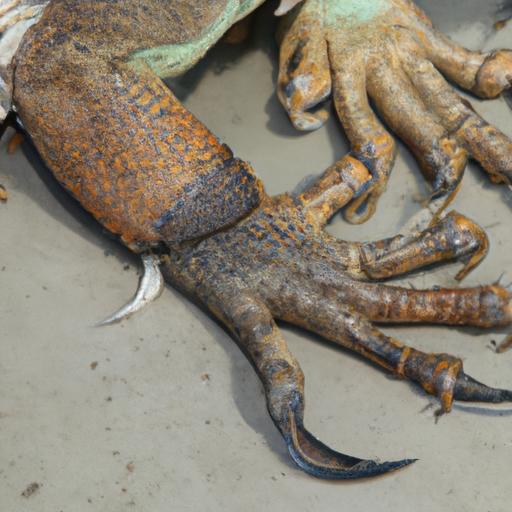
Discover the incredible regenerative abilities of iguanas in this article as we explore the question, “can iguanas grow limbs back?” Learn how to care for your pet iguana and prevent injuries.
Have you ever pondered the remarkable regenerative abilities of iguanas? The question of whether these fascinating creatures can grow back their limbs has intrigued scientists and animal enthusiasts for years. In this article, we will delve into the captivating world of iguana regeneration to shed light on this intriguing topic.
Exploring Iguanas’ Regenerative Abilities
Iguanas possess extraordinary regenerative powers, cementing their status as unique creatures in the animal kingdom. But what exactly does this mean? Let’s take a closer look at their regenerative abilities.
Understanding the Iguanas’ Regenerative Ability
Iguanas can regenerate various types of tissues, including skin, muscle, and bone. Their ability to regrow skin is particularly useful for evading predators. When caught, an iguana can break off its tail, distracting the predator and allowing it to escape. Over time, the tail grows back, regenerating what was lost.
Types of Tissue Regeneration in Iguanas
In iguanas, there are two types of tissue regeneration: epimorphic and morphallactic regeneration. Epimorphic regeneration involves complete regrowth of a lost body part, such as a limb. It entails the formation of a blastema, a mass of undifferentiated cells capable of differentiating into various cell types and tissues. On the other hand, morphallactic regeneration involves the replacement of damaged tissue by remodeling existing tissue.
Overall, the regenerative abilities of iguanas are captivating and provide a window into their unique biology.
Factors Influencing Limb Regeneration in Iguanas
Several factors play a role in the ability of iguanas to regenerate their limbs. Let’s delve into these factors and understand how they impact the regeneration process.
Age of the Iguana
Age is a critical factor affecting an iguana’s regenerative abilities. Research has shown that younger iguanas exhibit a more robust regenerative response compared to older ones. As iguanas age, their regenerative abilities gradually decline due to the reduced number of regenerative cells. This slowdown in the regeneration process makes it more challenging for older iguanas to regrow limbs successfully.
Severity of the Injury
The severity of the injury is another pivotal factor influencing an iguana’s regenerative capacities. If the injury is too severe, the iguana may struggle to regrow its limb. For example, injuries affecting the bone may hamper limb regeneration compared to injuries limited to the skin or muscle.
However, iguanas possess a remarkable ability to adapt to their surroundings. In cases where limb regeneration is not possible, they may compensate by adapting their remaining limbs to fulfill the lost limb’s functions.
Presence of Infection
Infection presence significantly impacts the regenerative abilities of iguanas. Infections can impede or even halt the regeneration process. Accordingly, it is crucial to provide proper care and prevent infections to ensure a successful regeneration process.
Understanding these factors is vital for providing the best care to pet iguanas and ensuring a successful limb regeneration process. By taking preventive measures such as maintaining a suitable habitat and providing a healthy diet, you can help your iguana retain its regenerative abilities, leading to a long and healthy life.
Decoding the Limb Regeneration Process in Iguanas
Have you ever wondered how iguanas manage to regenerate their limbs? The process of limb regeneration in iguanas is intricate and has been the subject of scientific study for many years. Let’s explore the cellular process and timeline of this remarkable phenomenon.
The Cellular Process of Limb Regeneration
Limb regeneration in iguanas involves a complex series of events that occur at the site of the injury. Upon injury, the cells in the stump undergo dedifferentiation, reverting to an earlier developmental stage. These dedifferentiated cells then proliferate and migrate toward the wound site, giving rise to a structure known as the blastema.
The blastema, a mass of undifferentiated cells, serves as the foundation for limb regeneration. Within the blastema, cells differentiate into different tissues, such as bone, muscle, and skin. The differentiation process is regulated by various growth factors and signaling molecules produced by the surrounding tissues.
The Timeline of Iguana Limb Regeneration
The timeline of iguana limb regeneration varies depending on the injury’s severity and the iguana’s age. Generally, the regeneration process takes several months to complete. In the initial days following the injury, the stump cells dedifferentiate and form the blastema.
Within a week, the blastema begins to grow, with its cells differentiating into the various limb tissues. At around six weeks, the new limb starts taking shape, with the bones gradually hardening. After several months, the iguana’s limb is fully regenerated, enabling it to move and function just like the original limb.
Understanding the cellular process and timeline of limb regeneration in iguanas enhances our appreciation of their astonishing regenerative abilities. The capability to regenerate an entire limb serves as a testament to nature’s incredible complexity and adaptability.
Aiding Iguanas in Limb Regeneration
As a responsible pet owner, ensuring the health and happiness of your iguana is of utmost importance. Providing a healthy diet, a suitable habitat, and preventing injuries can support limb regeneration if your iguana ever sustains an injury.
Providing a Healthy Diet
Maintaining a healthy and balanced diet is crucial for an iguana’s overall well-being and regenerative abilities. Feeding your iguana a diet rich in vitamins and minerals promotes recovery from injuries and enhances limb regeneration. Include a variety of leafy greens, vegetables, and fruits in their diet, and avoid processed or sugary foods. Additionally, a calcium supplement can help your iguana maintain strong bones, which are vital for successful limb regeneration.
Creating a Suitable Habitat
Establishing a suitable habitat for your iguana is essential for their physical and mental health. Iguanas require a warm and humid environment with access to basking spots and hiding places. Providing an appropriate habitat facilitates injury recovery and limb regeneration. Additionally, maintaining a clean habitat, free from harmful bacteria or parasites, reduces the risk of infections.
Preventing Injuries
Prevention is key in aiding your iguana’s limb regeneration. Given their susceptibility to injuries, it is crucial to provide a safe and secure environment. Handle your iguana gently and avoid rough play or handling that could lead to injuries. Furthermore, ensure your iguana’s enclosure is comfortable and spacious, preventing them from getting stuck or injured while moving around.
By providing a healthy diet, a suitable habitat, and taking preventive measures, you can aid your iguana in regenerating its limbs, should the need arise. Remember, prevention is always better than cure. Take good care of your iguana to ensure their well-being and happiness for years to come.
In Conclusion
The question of whether iguanas can regrow their limbs is a captivating one that has captivated the interest of animal enthusiasts. While iguanas possess remarkable regenerative abilities, limb regeneration is not a straightforward process. It depends on various factors, such as the severity of the injury, the iguana’s age, and the presence of infection.
Understanding iguana regeneration is essential for providing superior care to these unique creatures and preventing injuries. Additionally, studying iguanas’ regenerative abilities can offer valuable insights for medical research and the development of regenerative therapies for humans.
At iguanafacts.com, we are dedicated to providing accurate and up-to-date information about these fascinating creatures. We hope this article has not only informed but also piqued your curiosity about iguana regeneration.




